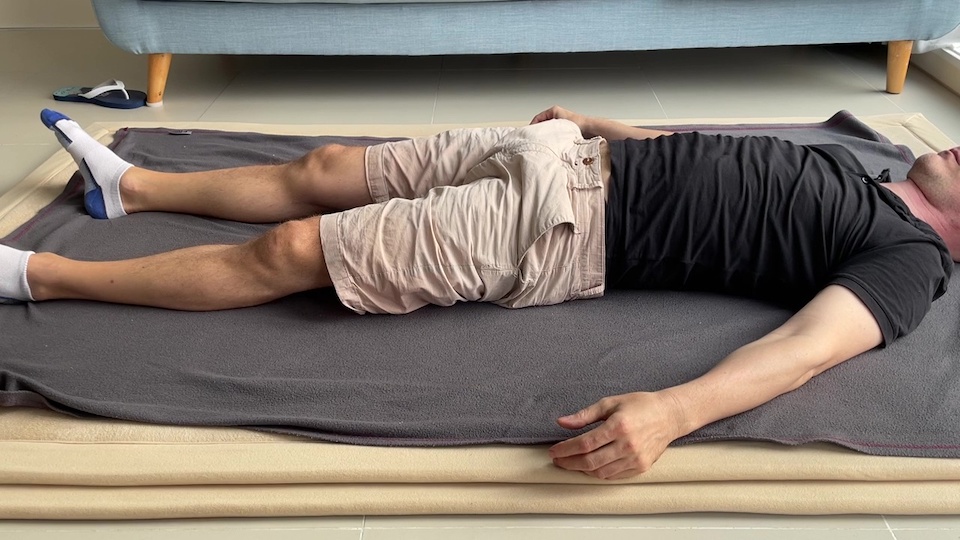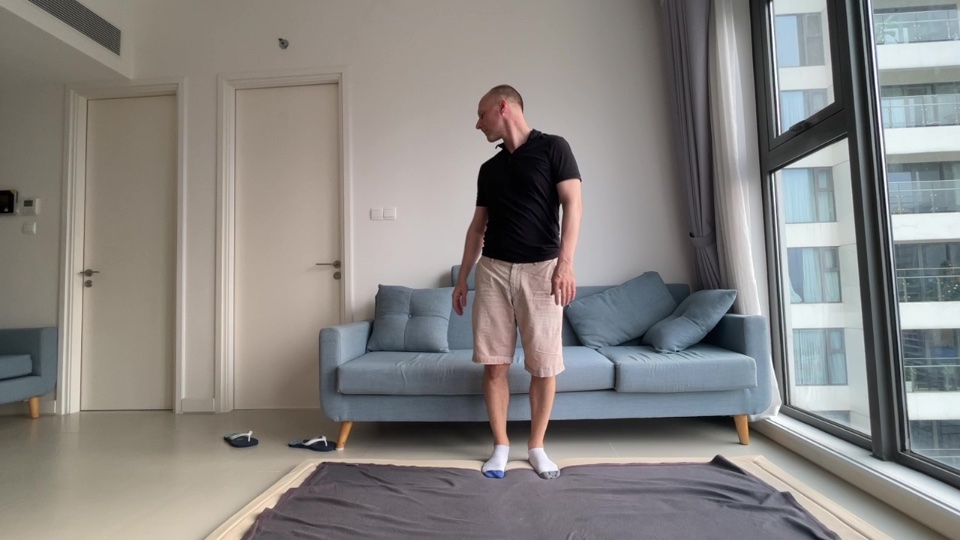Rolling the pelvis in prone position
You rest in prone position, on your front side, with your legs extended and with your hands standing next to your shoulders. You roll your pelvis right and left. Then you lift your head to look over a shoulder while rolling your pelvis, and you compare the same movement with various head positions, or with your knees bent. The movements are mostly initiated from your pelvis, with several differentiations.
This lesson will create more ease for your turning, how you look over your shoulder. It may also free up your breathing since you will release unnecessary, chronic tension from your chest. You will get a fresh awareness of your pelvis and how it connects your top to your bottom part. Furthermore this lesson might help you to stand upright and be at ease at the same time.
pelvismovement-initiationrollingUP9prone rolling_the_pelvis_in_prone_1
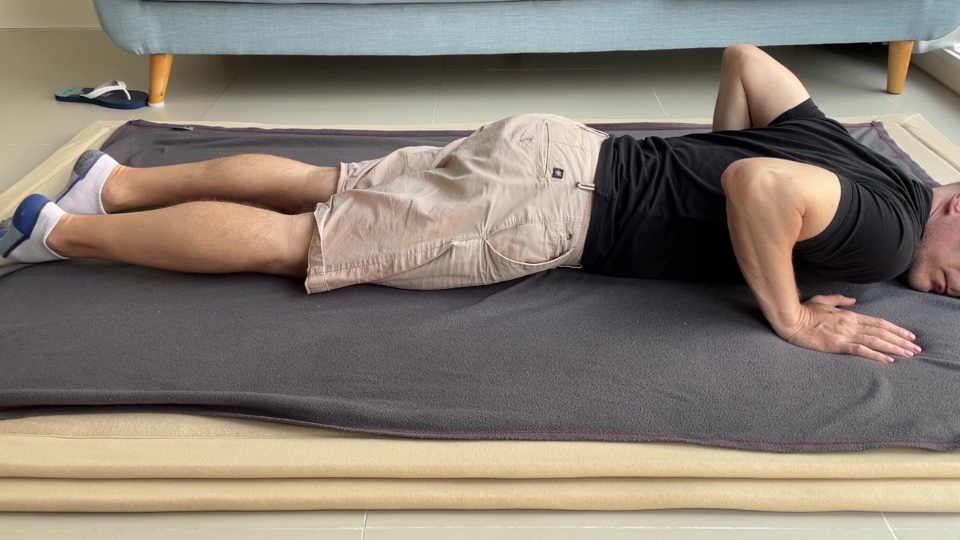
Come to lie on your front side, in prone position, with your hands standing next to each shoulder, your head turned to the right.
Roll pelvis to the left
Roll your pelvis to your left, to the side your left hand is standing.
- The left is where your left hand is standing, the right is where your right hand is standing.
Explore how you can help with your right hand, where you initiate the movement, what parts connect and what don't, what parts participate in movement and what parts don't seem to move at all.
Roll pelvis to the left
Roll your pelvis to your left, to the side your left hand is standing.

On your belly, like before, with your head still turned to the right.
Roll pelvis left and right
Roll your pelvis to the left and right, compare how it is different.
- Is it easer to roll your pelvis to the left?
Roll pelvis left and right
Roll your pelvis to the left and right, compare how it is different.
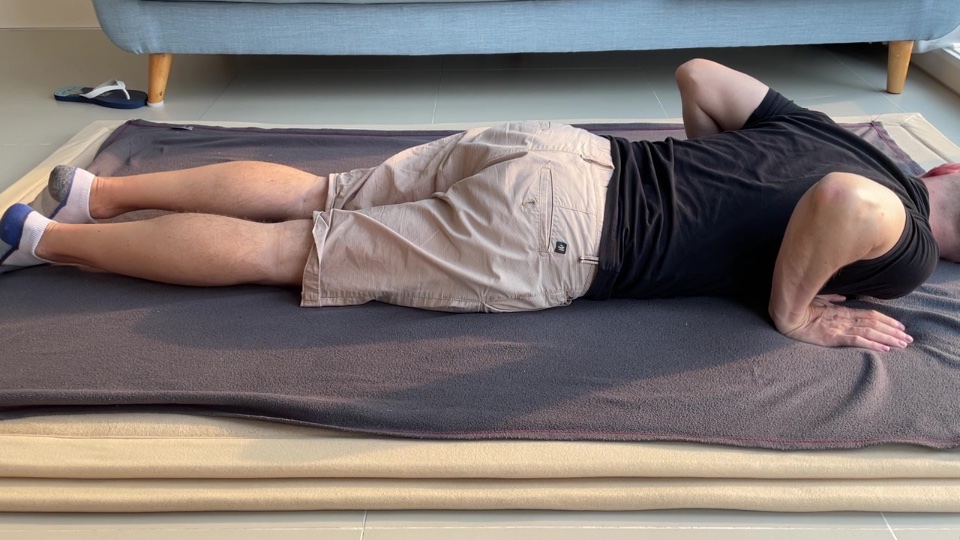
On your belly, like before, with your head turned to the left.
Roll pelvis, head to the other side
Explore the rolling of your pelvis, this time with your head turned to the left.
- See if your legs may roll, your feet may fall from right to left, and how your head can turn, or how holding your head in one fixed position helps or hinders the movement of your pelvis.
What part of you is leading the movement?
Roll pelvis, head to the other side
Explore the rolling of your pelvis, this time with your head turned to the left.

On your belly, with your hands standing next to your shoulders, your head turned to the left.
Look over left shoulder
Lift your head over your left shoulder to look towards your feet.
- Start small, increase the size of the movement little by little as it becomes more available with every new movement.
Allow your legs to turn, your left knee to bend, your elbows to straighten.
Look over left shoulder
Lift your head over your left shoulder to look towards your feet.

On your belly, with your hands standing next to your shoulders, your head turned to the right.
Look over right shoulder
Do the same exploration to the other side, look over your right shoulder.
- Again, start small, and let the movement increase little by little.
How does it compare to the right?
Look over right shoulder
Do the same exploration to the other side, look over your right shoulder.

On your belly, with your hands standing next to your shoulders.
Look over each shoulder
Combine the previous two movements, look once over your left, once over your right shoulder.
- See if there's differences to either side, things that are better on one side, more noticable, smoother, easier.
Start out slow, go faster as it becomes easier.
Look over each shoulder
Combine the previous two movements, look once over your left, once over your right shoulder.

On your belly, with your hands standing next to your shoulders, your knees bent
Roll, with your knees bent
Roll your pelvis with your knees bent, like in the first 3 explorations.
- Roll to one side, with your head to one side. Then the other side. Then combine.
Feel how your pelvis pulls on your shoulders and knees.
Roll, with your knees bent
Roll your pelvis with your knees bent, like in the first 3 explorations.

On your belly, with your hands standing next to your shoulders, your knees bent
Look, with your knees bent
Look over each shoulder with your knees bent, like in the second 3 explorations.
- Then roll to look over one shoulder, see how it is different with your knees bent.
Your right knee might not only bend, but be drawn up a bit towards your pelvis. You might even come to sit up.
Look, with your knees bent
Look over each shoulder with your knees bent, like in the second 3 explorations.
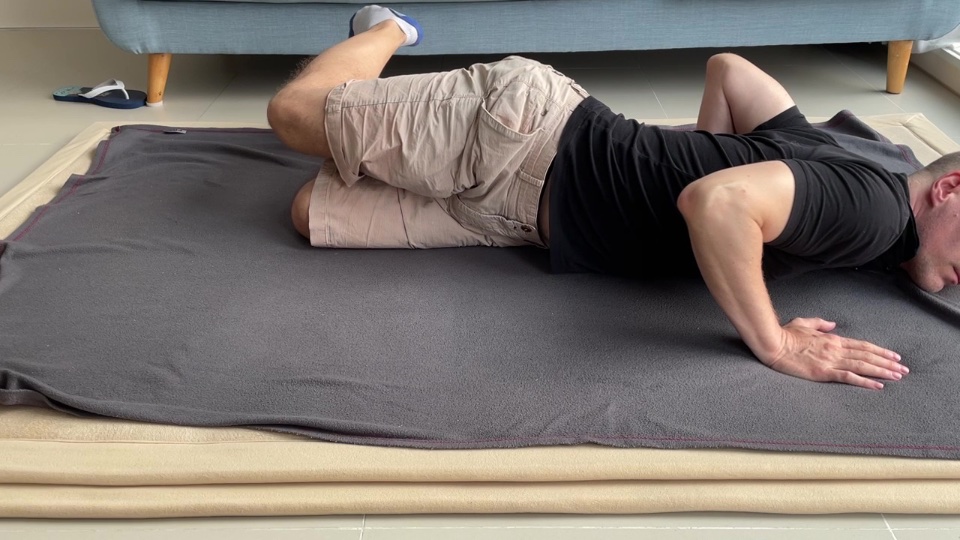
On your belly, with your hands standing next to your shoulders, your knees bent
Slide your leg
How is the movement different when you slide your leg, lead with your knee?
- When you look over your right shoulder, allow your right knee to slide over your left lower leg towards your left foot.
How does this extension and lengthening of your front side change the movement? As opposed to merely rolling your pelvis and not sliding your legs.
Slide your leg
How is the movement different when you slide your leg, lead with your knee?

On your belly, with your hands standing next to your shoulders, your knees bent
Look over the other shoulder
Look over your right shoulder when you roll your pelvis to the right.
- This is a strong differentiation. Instead of looking over your left shoulder, when you roll the pelvis to the right, you look over your right shoulder.
What are the movements and impressions that emerge from this variation?
Look over the other shoulder
Look over your right shoulder when you roll your pelvis to the right.
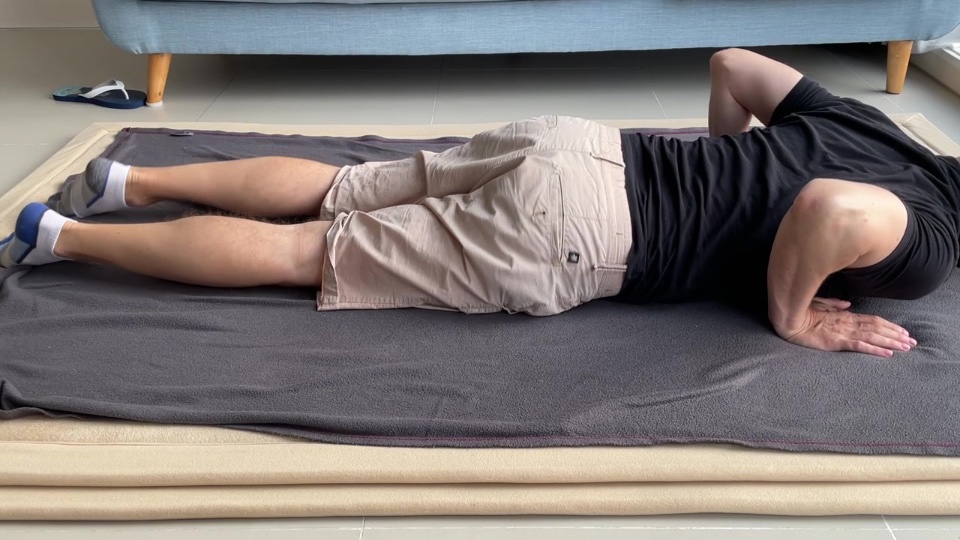
Come to lie on your front side, in prone position, with your hands standing next to each shoulder, your head turned to the right.
Reference movement
Roll your pelvis
This is the first movement again. How has it changed? How have you changed? How has your technique changed? How has your perception changed?
Reference movement
Roll your pelvis
This is the first movement again. How has it changed? How have you changed? How has your technique changed? How has your perception changed?


